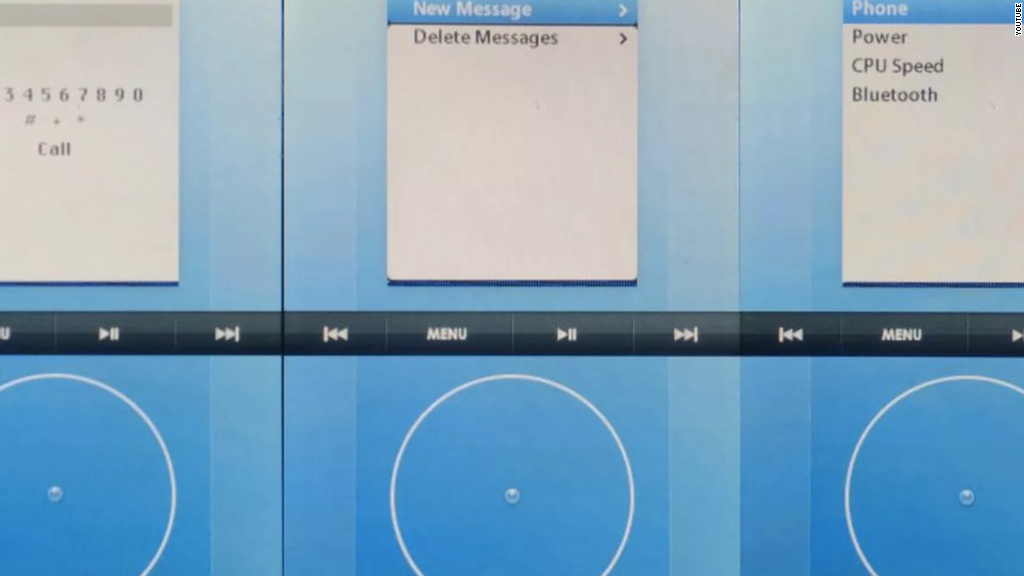
An early prototype of the iPhone reveals how Apple considered making its iconic smartphone a lot more like the iPod.
A newly discovered video, posted to YouTube by independent tech journalist Sonny Dickson, shows an iPhone running an iPod-like precursor to the iOS operating system, dubbed Acorn.
In the prototype, the iPhone was controlled by a virtual "click wheel" in the bottom half of the screen, not the familiar touch-button apps we know today.
The prototype had a menu display in the top half, just like early version of the iPod, and a black strip in the middle with buttons for rewind, menu, play/pause and fast forward.
The Acorn software was entirely text-based, with options for "favorites," "recents," "dial" and "SMS," in addition to all the menu items familiar to iPod users at the time.
Though the video doesn't show a call being placed, it gives us a peek at a dialer that probably would have driven iPhone owners insane. It appears as though people would have had to dial numbers like on an old rotary phone. God help them if they wanted to type a text message.
"You can see why we ditched it?" iPod designer and former Apple executive Tony Fadell tweeted Friday morning.
The click-wheel iPhone has long been legend. Steve Jobs biographer Walter Isaacson wrote that Apple's engineers weren't sure customers would be able to master a smartphone with a touchscreen, so they pursued an alternate operating system controlled by a click wheel.
Until Friday, a patent filed in 2006 was our only glimpse at what a click-wheel iPhone could have looked like. It turns out the patent drawings were very similar to the prototype revealed on Friday.
Early prototypes for the iPhone are rarely seen: Apple famously destroys its rejected designs to avoid leaks. But we've been treated to a few glimpses into Apple engineers' thinking about how the first iPhone should have been designed.
A patent dispute with Samsung in 2012 made public several early versions of the iPhone's hardware, including some truly odd shapes and sizes.
According to Isaacson's biography, Apple's engineers got fully behind the touchscreen concept because they could not figure out how to dial and text using a click wheel.
The touchscreen iPhone we're all familiar with ultimately debuted in 2007.

